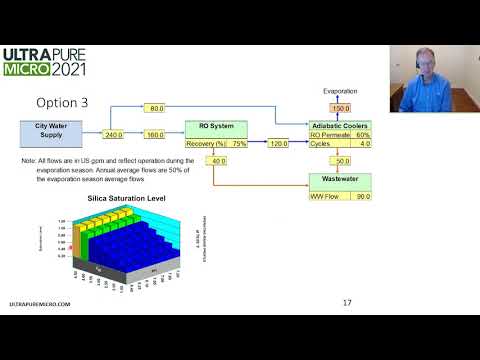Characterizing the retention of UPW filters using enhanced SEMI C79 testing
Date Published 2017 | UPW journal archive
To access our resources you will need to be a member of UltraFacility, log in to your account or purchase a membership to view this content.
Particles in ultrapure water (UPW), used during the manufacture of microcircuits on semiconductor wafers, can deposit onto the wafer surface thereby causing decreased yield and reliability of the microcircuits. As microcircuit future sizes continue to decrease, understanding the ability of a filter to capture and retain these particles becomes increasingly important and challenging. In 2013, SEMI C79-0113, “Guide to Evaluate the Efficacy of Sub-15 nm Filters used in Ultrapure Water (UPW) Distribution System” was published. This document provides a SEMI recommended method for evaluating the efficacy of filter elements used to remove particles in UPW fluid streams. Since the release of this guide, the method has been enhanced to allow quantification of particle retention over a broad size range. This was accomplished by adding larger silica particles to the Ludox® SM30 silica specified by SEMI C79 resulting in a poly-dispersed silica challenge. A particle size distribution (PSD) slope of -2 (log-log) was selected so the challenge would more closely mimic a PSD typically found in UPW, yet still have sufficient large particles to measure a log retention value of 2 or 99% retention. This silica challenge has been designated as an “area-weighted challenge”. The use of this enhanced method has resulted in some interesting observations including indication of a most penetrating particle size similar to what is observed in gas filtration. The presence of a most penetrating particle size would indicate that retention mechanisms other than sieving are active, particularly for particles smaller than 30 nm. This paper will review the enhancements made to the test method, review the retention data from a number of filter types and manufacturers, and discuss the implications for filters used in UPW. This article was originally published in the Ultrapure Micro Journal in November 2017.
Related content
Ion Exchange Resins - How They Work, Why They Work and How They Don't Work
Semiconductor Industry Trends Highlighted at UPW Micro 2012

Doing more with less - minimizing data center water and wastewater
UPW ITRS and SEMI: Past – Present – Future of Enabling Advanced Existing and Future Technologies
Back to results